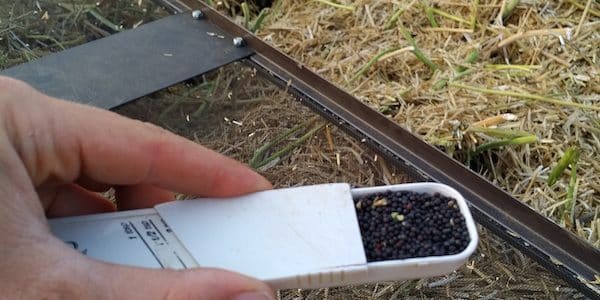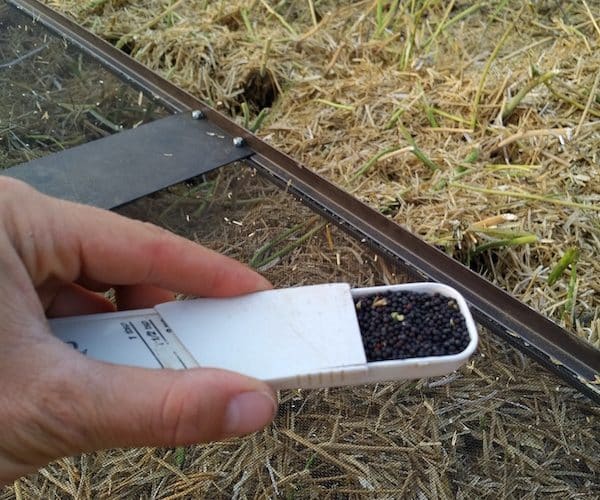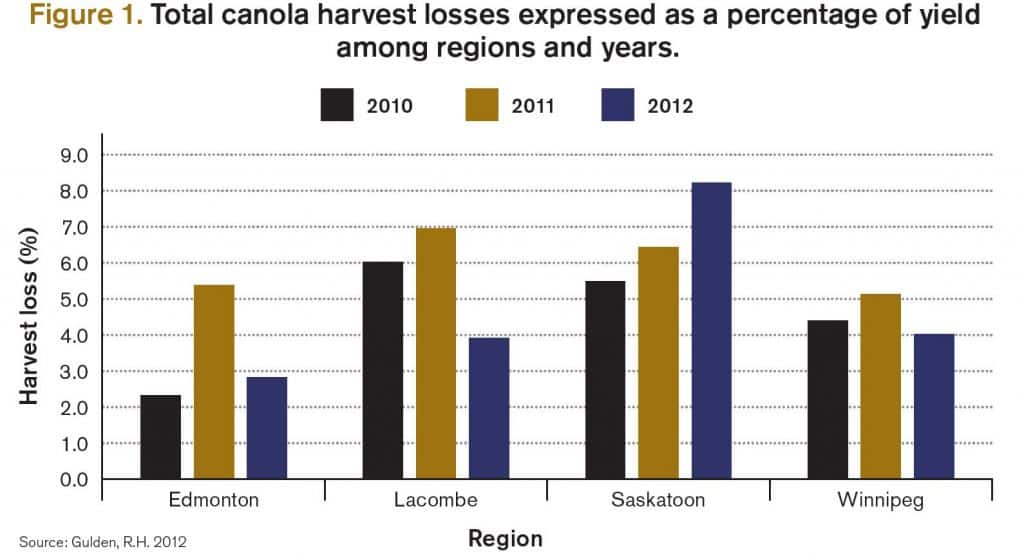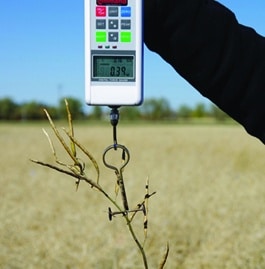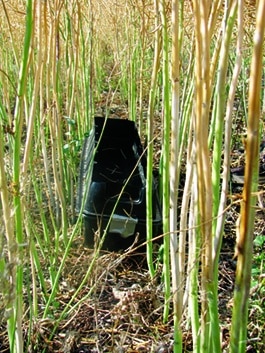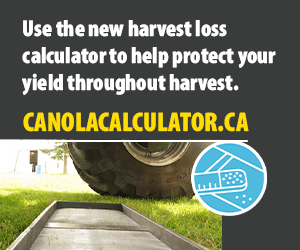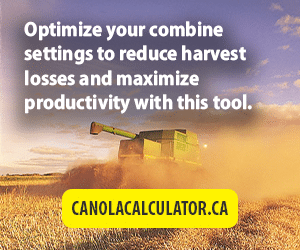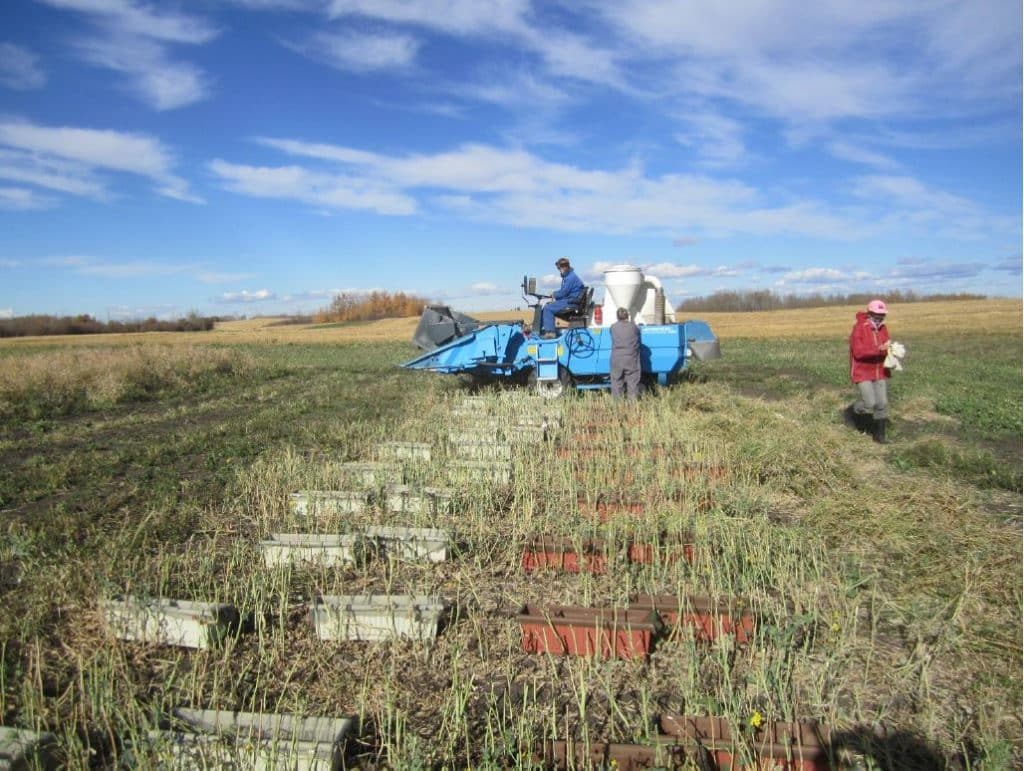Careful decision making, financial input and significant effort by farmers all growing season is aimed at maximizing yield. So, continuing to protect the crop’s yield by reducing pod shatter and pod drop losses at harvest takes advantage of all that has gone into the mature crop.
Harvest loss survey results
To investigate how much of an issues canola harvest losses were, Gulden led the Evaluation of harvest losses and their causes in canola across Western Canada study. A total of 310 fields were surveyed about harvest losses of canola on farms in Alberta, Saskatchewan and Manitoba from 2010 to 2012. Yield losses were determined using a vacuum method shortly after the crop was harvested. For each field, producers were asked to prepare a survey questionnaire that addressed general agronomic information and specific harvest-related facts.
Results from the research identified that harvest losses are complex, with many interacting variables that are difficult to separate out. It also found that higher yields were associated with lower harvest losses and management of harvest losses begins at the time of planting canola.
Given that more data points from a larger region over more years would provide more robust conclusions, this study also reported:
- No differences in total harvest losses between direct-harvested (straight cut) and swathed canola were identified.
- While higher combine ground speed increased harvest losses, there was no evident difference between combine brands. Combine manufacturer and combine type (rotary or conventional) did not influence the total proportion of canola harvest losses.
- Application of a fungicide at flowering did result in a reduction of proportional harvest losses of 1.4 per cent, but absolute losses were not affected. This could suggest that fungicide played a role in increasing yield, or that fungicide applications were targeted only at fields with higher yield potential (and possibly with reduced sclerotinia incidence/severity).
- Grower choice of variety may play a role in canola harvest losses.
- Time of day of combining, on its own, could not be identified as a significant factor contributing to total harvest losses, no differences in proportional or absolute total harvest losses were attributable to the time of day of swathing.
- Proportionally, harvest losses decreased with increasing canola yield. Management factors that contribute to high canola yield and earlier swathing dates, such as adequate canola plant density, resulted in proportionally lower harvest losses.
For more details on this study, check out the final report on the project summary page.
The publication that was produced as a result of this research, the On-farm seed loss does not differ between windrowed and direct-harvested canola paper was published in 2014.
Pod shatter and pod drop testing approaches
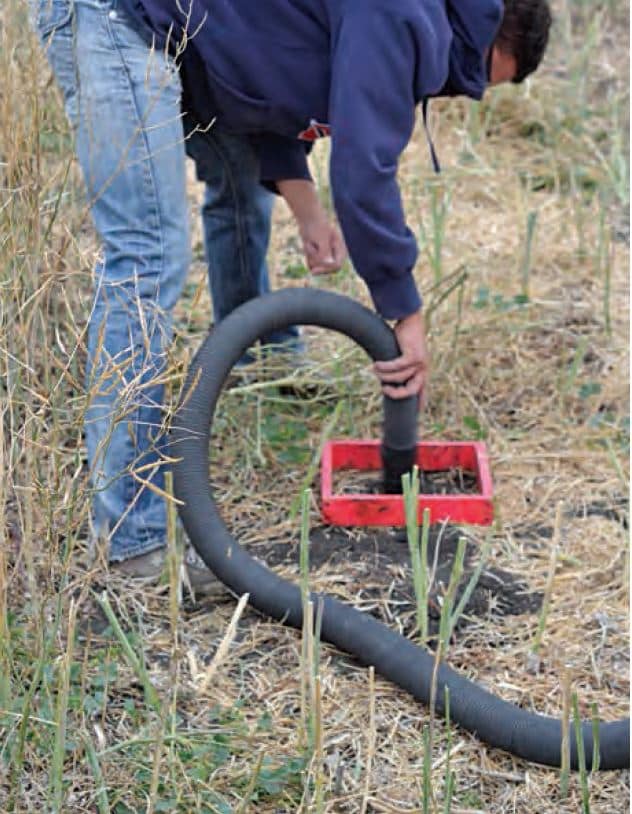
To measure potential genetic and machinery improvements to current harvest losses required sufficient tools to measure losses. To address this information gap, Gulden’s Developing methods to estimate pod drop and pod shatter in canola project compared four methods of estimating pod-drop and seed (pod) shatter in canola — catch trays, vacuum, pod retention resistance (a new method) and visual ratings.
Field trials were conducted in 2011 and 2012 at Carman, MB and Kelburn Farm south of Winnipeg, MB to compare the methods. Field studies compared eight different canola varieties (four hybrid and four OP) at two different seeding densities. The results showed:
- Visual ratings and the catch tray method were among the most time efficient methods evaluated, but visual ratings only provided a good measure of seed (pod) shatter.
- The catch tray method was efficient and provided good estimates of both pod-drop and seed (pod) shatter.
- Pod-retention resistance was remarkably consistent for individual varieties over years and locations. The study found that pod retention is not affected by time or moisture content, making it an attractive potential candidate for high-throughput applications. However, further refinement and validation of this method are still needed to further refine this method.
- Digital image analysis seemed promising, but since sealed pods were not easily distinguishable from split pods, plant residue, other vegetation with the software package used in this study, accurate and replicable results would be difficult.
For an explanation of these results from the lead researcher on this study (Robert Gulden), check out this video:
For more specifics on this research, check out the final report on the project summary page.
Gulden’s research led to two peer-reviewed publications:
The 2017 Pod drop in Brassica napus is linked to weight-adjusted pod-retention resistance paper, which shares this insight:
- “Pod retention-resistance, the force it takes to dissociate canola pods at the pedicle-rachis junction, and pod drop differed among Brassica napus genotypes in a series of field experiments.”
- “The relative importance of factors that affected pod-retention resistance was different from those that affected pod drop.”
- “Pod retention resistance can be used as a predictor of pod drop in selecting for canola genotypes with reduced seed loss.”
The Pod drop and pod shatter are not closely related in canola paper, which states:
- “Preharvest seed losses in canola (Brassica napus L.) can be substantial and are caused by pod drop and pod shatter.”
- Pod drop and pod shatter are likely independent factors.
- “Pod shatter was linked primarily to genotype while pod drop was influenced more by the environment.”
More pod shatter advances
At a similar time, the Developing Brassica napus lines with reduced pod shattering project was completed by Shah, which provided these advances:
- Developed canola lines with reduced pod shattering.
- Produced several pod shattering gene constructs (for use in other crops).
- Successfully completed CFIA-regulated field trial.
- Acquired new knowledge for targeted mutation to develop non-GMO canola with reduced pod shattering.
Learn more about this project in the final report.
Canola harvest resources for growers:
Ongoing interest in canola pod shatter and pod drop as a harvest loss factor has driven the production of a pod shatter and pod drop illustration by the Canola Council of Canada (CCC), which is featured in the Canola Encyclopedia.
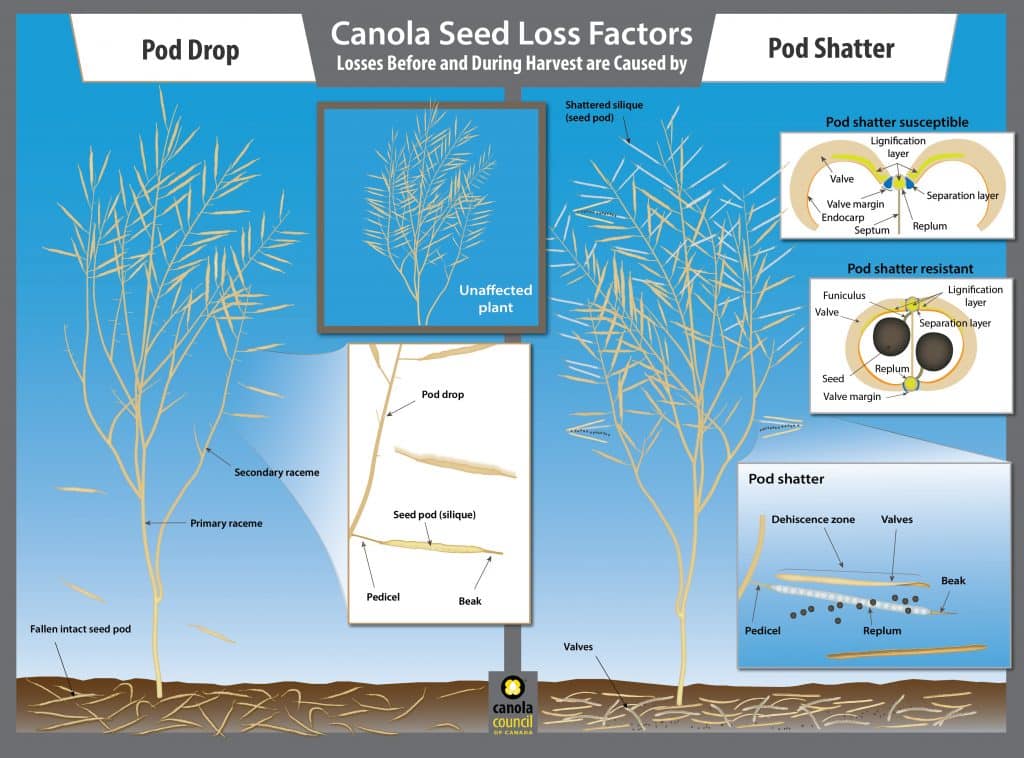
Additional harvest resources available to canola growers include:
- The interactive Harvest Loss Calculator and complementary Combine Optimization Tool and combine anatomy illustration.
- The CCC’s Guide to managing canola harvest which provides straight combining tips, along with swath timing and fall frost management recommendations.
- Canola Watch’s Harvest loss tips podcast, and corresponding Make every seed count and Harvest and storage management webinars from the Manitoba Canola Growers and SaskCanola.
- Keep it Clean’s glyphosate staging guide, video and Spray to Swath calculator
- The new Harvest and Storage articles in Canola Watch’s new fundamentals section
Additional research on canola harvest matters
More research findings on harvest topics will be shared once this Manipulating agronomic factors for optimum canola harvest timing, productivity and crop sequencing project is completed in 2023.
Another harvest project which investigates at weed seeds (instead of harvested canola seeds) is the Harrington Seed Destructor Evaluation at Field Scale in Alberta study, which began in 2017. Read more about this technology in this Canola Digest article.
For more completed research on other harvest topics, check out these studies featured on the Hub:
- On-Farm Survey of Combine Grain Loss in Canola Across Western Canada
- Pre-harvest herbicide and desiccation options for straight-combining canola: Effects on crop dry-down and seed quality
- Feasibility of bag storage system for canola under Prairie conditions (part 1)
- Feasibility of bag storage systems for canola storage under Prairie conditions (part 2)
- Defining best management practices for using supplemental heating with natural air drying
- Storage and handling characteristics of new varieties of high oil content canola
These completed studies are also available from SaskCanola:
- Canola Direct-Cut Harvest System Development
- Harvest Crop Management Strategies of Straight Cutting, Desiccation, Pushing and Swathing in Argentine and Polish Canola on the Effects of Yield Characteristics
- Cultivar Considerations for Straight Combining
More canola agronomic studies on various subjects are available on the Canola Research Hub.
Published August 31, 2021

